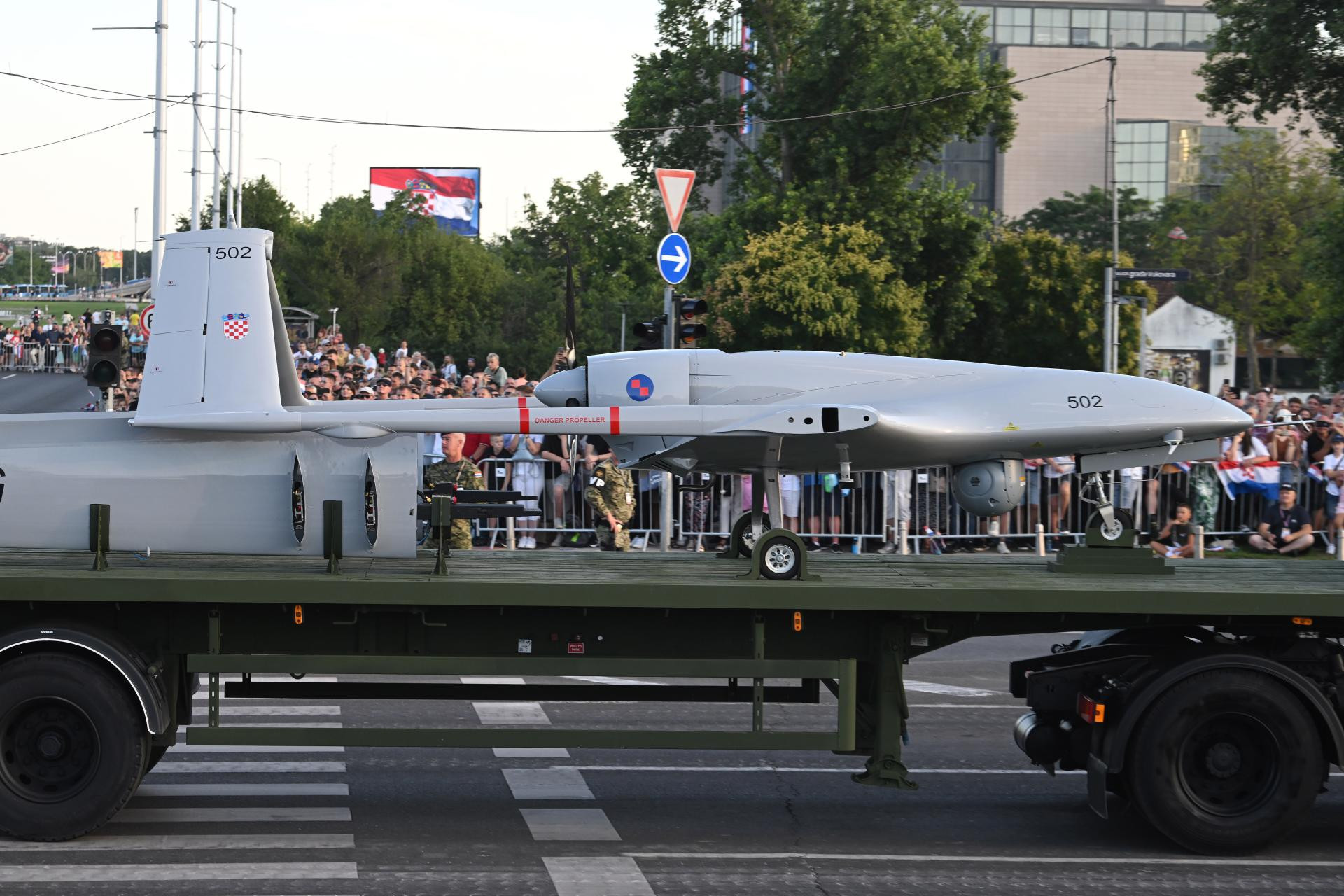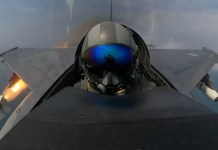Croatia recently marked the 30th anniversary of ‘Operation Storm’, the last and decisive battle in its war of independence from Yugoslavia. The celebration centred around an extravagant military parade that was meant to flaunt the country’s military firepower to the world.
The Croatian War of Independence was fought between the Croatian forces and the Croatian Serbs, who occupied large swathes of Croatian territory in 1991 with assistance from the Yugoslav People’s Army (JNA).
In 1995, during Operation Storm, nearly all of the land that the rebel Croatian Serbs had won was recaptured by Croatian forces.
Since then, Croatia has commemorated August 5 as the Day of Victory and Homeland Thanksgiving and the Day of Croatian Veterans.
This year, the grand military parade took place in the capital, Zagreb, days ahead of the 30th anniversary of the victory. “We are celebrating victories; we don’t hate anyone. We are fully aware – and I want those who come after us to be aware – that this [Operation Storm] is a victory of Croatian soldiers, the Croatian people and the Croatian leadership of that time,” President Zoran Milanovic said ahead of the event.
The biggest highlight of the parade was an aerial display by the country’s newly acquired Rafale fighter jets. According to reports, nine of the country’s 12 Rafale 4.5th-generation aircraft flew over Vukovar Street, as tens of thousands of citizens watched on in awe.
30th anniversary of #OperationStorm which brought victory, liberty and peace. Thanks to friends and allied troops from 🇺🇸🇬🇧🇵🇱🇱🇹🇦🇱🇱🇺🇵🇹🇭🇺 for joining the #Croatian Armed Forces in the #VictoryDay military parade in #Zagreb. @CroatiaNato @MORH_OSRH @NATO pic.twitter.com/AbXL3HXnDC
— Sebastian Rogač (@SebastianRogac) July 31, 2025
Croatia ordered 12 Rafale aircraft in 2021—10 single-seaters and two twin-seater jets. These are surplus aircraft from the French Air and Space Force upgraded to the F3-R standard.
This acquisition is Croatia’s most ambitious military upgrade, aligning its air force with NATO standards and enhancing its role in regional security along the Adriatic.
The aircraft has state-of-the-art self-defense systems, a new-generation electronic radar with excellent sensor integration, and attack-navigation systems. It also uses various air-to-air and air-to-surface weaponry. Croatia received the last ordered Rafale in 2025.
⚡️ RAFALI NAD ZAGREBOM – GRMLJAVINA SNAGE I HRVATSKOG PONOSA! ⚡️
Ovaj mimohod prikaz je snage i moći, ali i podsjetnik: Hrvatska nije samo država – ona je ideja, san i obećanje budućim generacijama. Neka grmi, neka svijet zna – Hrvatska živi u srcima svojih sinova i kćeri! pic.twitter.com/bjlpwgL9Qz
— 𝕭𝖔ž𝖔 𝕽𝖆yz𝖑𝖑e𝖗 K𝖗𝖆š ✞ (@bozo_kras) August 2, 2025
With this acquisition, the Croatian Air Force is undergoing a massive transformation, switching from a second-generation fighter equipped with short-range air-to-air missiles to a sophisticated 4+ generation aircraft with beyond-visual-range air-to-air missiles.
In addition to the aircraft, Croatia will also receive training programs, simulators, and continuing support services until the end of 2026 to help the new assets integrate.
The other major highlight was the appearance of two loaned Leopard-2 tanks in public for the first time. Croatia is currently in the process of acquiring the latest Leopard-2A8 variant of these battle-tested war machines.
It signed a Letter of Intent (LoI) for about 50 of these cutting-edge tanks in 2024 that will replace the archaic M-84 tanks and M-80 infantry fighting vehicles in the Balkan state’s inventory.
Hrvatska vojska trenutno rabi manji broj tenkova Leopard 2A4 za obuku posada i osoblja.
Ovi tenkovi ostat će u Hrvatskoj nakon isporuke A8.(navodno će se to kompenzirati preostalim osamdesetčetvorakama,uz još neki benefit u koorist Hrvatske)
Praksa predstavlja standardni postupak… pic.twitter.com/7SQwzENqhZ— Vuk83J 🇭🇷 (@putnik833) July 31, 2025
“We are purchasing the 2A8 model, which currently only exists as a prototype and is not yet in service with the German Armed Forces. Croatia will receive them when Germany does,” Croatian Defense Minister Ivan Anušić was quoted as saying by the media.
In addition to the French fighter jets and German-origin battle tanks, the parade featured the Turkish TB2 drones for the first time, although they did not conduct a flight.
The Croatian government signed a deal to acquire six Turkish Bayraktar TB2 unmanned aerial vehicles in 2024. “The configuration is based on six aircraft equipped with electro-optical cameras for reconnaissance, including the initial set of weapons, and ensures double radio coverage of the entire territory of Croatia in stationary and mobile versions,” Ivan Anusic said at the time.

The Bayraktar TB2 unmanned aerial vehicle has been used in several recent conflicts, including the Russian and Ukrainian war and the Azerbaijan and Armenian conflict. The acquisition of these battle-hardened UAVs is significant as it would strengthen this small country’s surveillance operations, as well as its overall combat capability.
The parade did not feature the HIMARS (High Mobility Artillery Rocket System), which was also purchased last year, as noted by Balkan Insight. “The HIMARS is not coming. We asked the US but couldn’t reach an agreement. What matters most is that the system arrives in our service within the next two years,” the Defense minister reportedly told the media.

Notably, Marinko Kresic, the head of the General Staff, told N1 television that the parade’s main purpose is to demonstrate to Croatian taxpayers what their money is being used for, and to demonstrate Croatia’s military might to NATO and other nations, “to show that we are not a toy,” a reference to the Serbian aggression of 1991.
Croatia has increased its defense spending to 2% of its GDP and launched an all-around effort to overhaul its military and modernize it to ensure interoperability with partners and allies. “There have been significant (military) purchases through the last few years. More is on the way, so our taxpayers have to see where it’s all going, and this is a good occasion for such a show,” Igor Tabak, a Croatian political and security analyst from the OBRIS institute in Zagreb, was quoted as saying by Euro News.
What Was Operation Storm?
Earlier, Croatia, along with Slovenia, Bosnia and Herzegovina, North Macedonia, Montenegro, and Serbia, was a part of the Socialist Republic of Yugoslavia. However, the republic had had political and economic problems in the late 1980s, which progressively worsened with the weakening Soviet influence and rising nationalism in these states.
Croatia, like others, wanted to be an independent state.
Croatia’s population was over 78% Croat and about 12% Serb. Croatian Serbs, fearing discrimination in an independent Croatia, sought autonomy, supported by Serbia and the Yugoslav People’s Army (JNA). While Croatia, under President Franjo Tuđman, sought independence, Serbia, under Slobodan Milošević, intended to establish a “Greater Serbia” or maintain a Serb-dominated Yugoslavia.
The JNA, initially a federal army, became a tool of Serbian interests under Milošević, who aimed to create a “Greater Serbia” by securing Serb-populated areas in Croatia and Bosnia. Thus, it started arming and supporting the Croatian rebel Serbs.
The rebel Croatian Serbs were, thus, backed by Serbia. They declared autonomy in Serb-majority areas, forming the Republic of Serbian Krajina (RSK) within Croatia in 1990.
On May 19, 1991, Croatia held a referendum, with 93% voting for independence, which was largely boycotted by the disgruntled Serbs. This set the stage for Croatia’s declaration of independence on June 25, 1991.
The rebel Croatian Serbs and the JNA deployed about 80,000 troops, 500 tanks, and air superiority in Serb-held areas of Croatia and attacked the newly formed Croatian state. By late 1991, Serb forces controlled about 30% of Croatia, including strategic cities, highways, and Adriatic ports. The objective was to isolate Croatia economically and militarily.
The United Nations eventually mediated a ceasefire between the two warring factions in January 1992, which halted major fighting. The UN Protection Force (UNPROFOR) was deployed in Krajina, the Serb-held region.
The European Commission recognized Croatia’s independence shortly, bolstering Croatia’s legitimacy. However, the country remained under an arms embargo to curb fighting.
The war entered a stalemate between 1992 and 1994, with sporadic clashes between the two sides. Croatia took its sweet time to rebuild its armed forces, and in May 1995, it launched ‘Operation Flash.’ It managed to recapture Western Slavonia, demonstrating its growing military capability.
Then came Operation Storm, the last major offensive of this war.
It was a decisive military offensive conducted by the Croatian Armed Forces, with support from the Army of the Republic of Bosnia and Herzegovina, from August 4-7, 1995. The goal was to retake territories controlled by the self-proclaimed RSK, and to secure key infrastructure, such as highways and railways connecting Zagreb to the Adriatic coast.
A massive force of about 150,000 troops, including the Croatian Army (HV), Special Police, and Home Guard, supported by 400 tanks, 500 artillery pieces, and a small air force with MiG-21 jets and Mi-24 helicopters, participated in this offensive.
The forces launched a multi-front assault on RSK strongholds, using rapid, coordinated attacks, particularly to overwhelm Serb defenses.
They used Artillery barrages, tank advances, and Special Police operations to secure critical heights, including the Dinara mountains.
Knin, the capital of RSK, fell on August 5, 1995, after intense shelling and ground assaults, marking a symbolic and strategic victory. This was followed by the fall of other key areas, including Glina, Petrinja, and parts of Banija and Kordun.
The Operation Storm ended on August 7, 1995. Croatia recaptured the 10,400 square kilometers, roughly one-third of its occupied territory, restoring control over the Krajina region and key infrastructure. Meanwhile, the RSK’s military and political structures disintegrated, leading to its dissolution.
Operation Storm is celebrated as a turning point that secured Croatia’s independence and territorial integrity. It is seen as a triumph of military strategy and national resilience.
However, it is considered a big tragedy in Serbia, as many ethnic Serbs died in the conflict or became refugees.
Croatia became a full-fledged member of NATO in 2009 and of the EU in 2013. The parade held in Zagreb is an ode to the victory that was long in the making.
- Contact the author at sakshi.tiwari9555 (at) gmail.com
- Follow EurAsian Times on Google News




